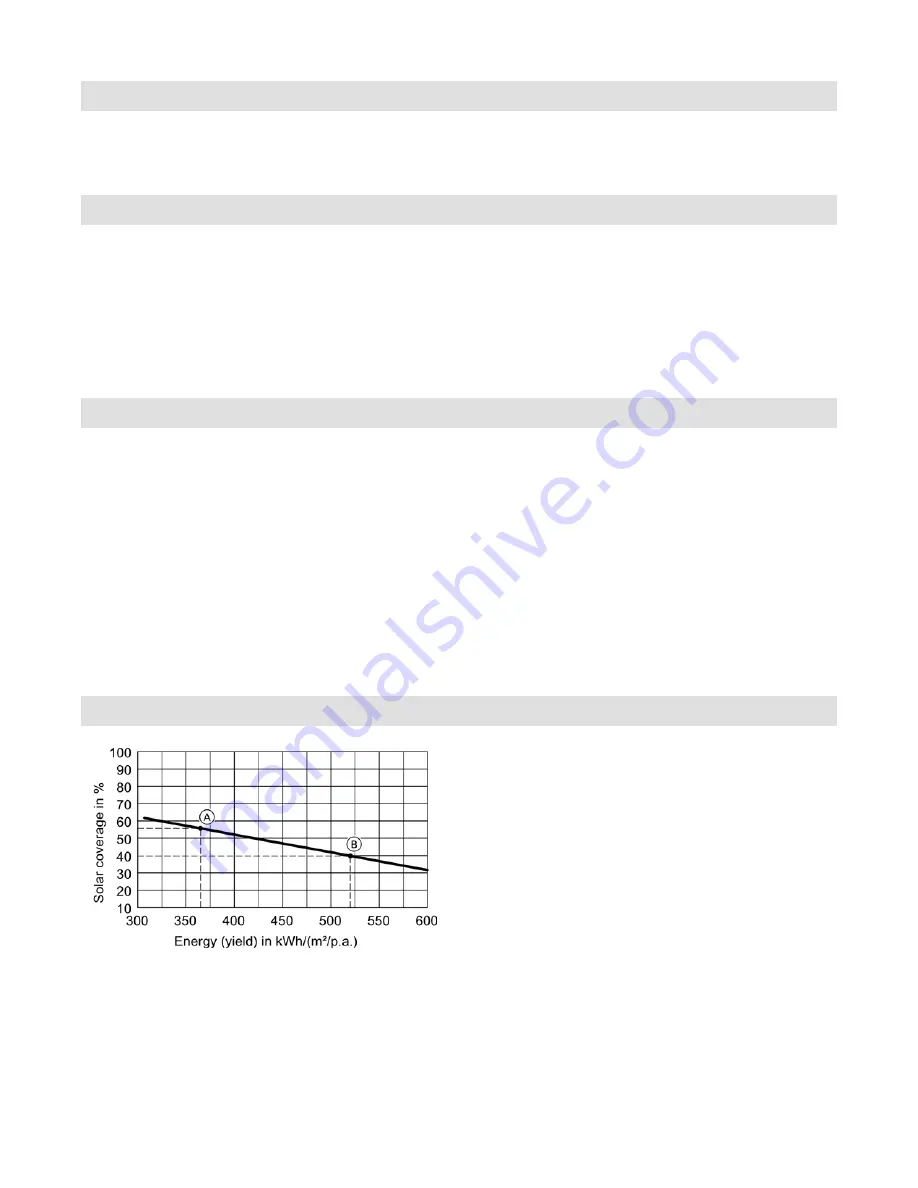
Solar System Design Guide
11
6020 457 - 01
Thermal Capacity
The thermal capacity in kJ/(m
2
· K) indicates the amount
of heat absorbed by the collector per m
2
and degree
Kelvin. This heat is only available to the system to a
limited extent.
Stagnation Temperature
The stagnation temperature is the maximum temperature
that the collector can reach during insolation of 317 Btuh/ft²
(1000 W/m²).
■
Vitosol 200-FM, with ThermProtect: Up to 293°F (145°C)
If no heat is drawn from the collector, it will heat up until
it reaches the stagnation temperature. In this state, the
thermal losses are of the same magnitude as the radiation
absorbed (energy in = energy out).
System Filling Pressure and Steam-Producing Power
System filling pressure for Vitosol 200-FM
To prevent steam creation of the solar heat transfer
medium, the system filling pressure of the solar thermal
system must be increased. At the highest point of the
solar thermal system, a pressure of 44 psi (3.0 bar) must
be present (see page 83). The static head of the solar
thermal system, the pressure reserve for ventilation and
the supplement for the difference in height between the
expansion vessel and the safety valve must also be taken
into account when filling the system.
Adjust the pre-charge pressure of the expansion vessel to
match the relevant system configuration. Always adjust
the pre-charge pressure of the expansion vessel before
filling the solar thermal system.
Solar Coverage
The solar coverage rate indicates what percentage of the
energy required annually for DHW applications can be
covered by the solar thermal system.
Designing a solar thermal system always entails finding
a good compromise between yield and solar coverage.
The higher the selected solar coverage, the more
conventional energy is saved.
However, high solar coverage is linked to an excess of
heat in summer. This means a lower average collector
efficiency and consequently lower yields energy in
Btuh/ft
2
(kWh/m
2
) absorber area.
Most residential solar DHW systems are sized to achieve
55 to 60% solar coverage.
Most larger commercial solar DHW systems are sized to
achieve 30 to 50% solar coverage.
The maximum solar coverage recommended to avoid
overheating in most DHW systems and pool systems
is 60%.
A
Conventional sizing for DHW systems in detached
houses
B
Conventional sizing for large solar thermal systems
Legend
Steam-producing power
The steam-producing power in Btuh/ft² (W/m²) indicates
the maximum power level at which a collector produces
steam during stagnation and transfers it to the system,
when evaporation occurs.
ThermProtect switching flat-plate collectors in solar
thermal systems with higher system pressures will no
longer produce steam. The steam producing power of
such these collectors becomes 0 Btuh/ft² (0 W/m²).
Principles












































